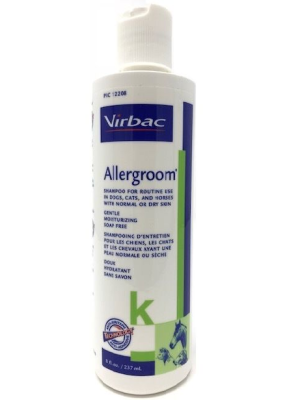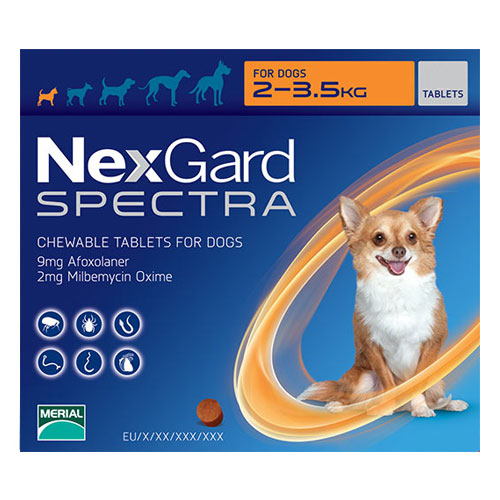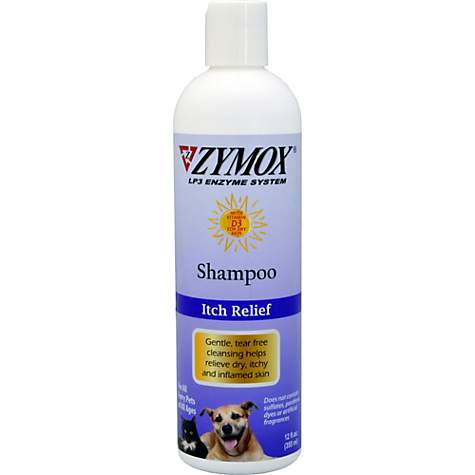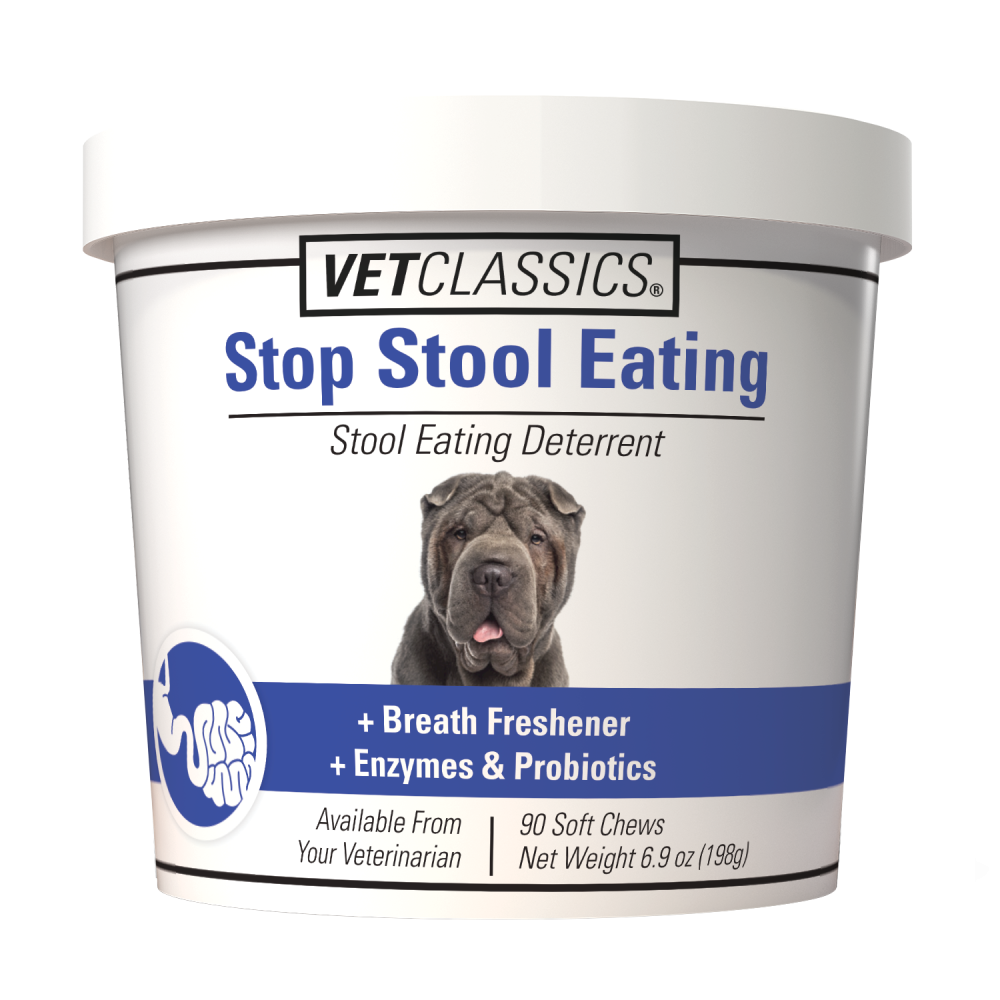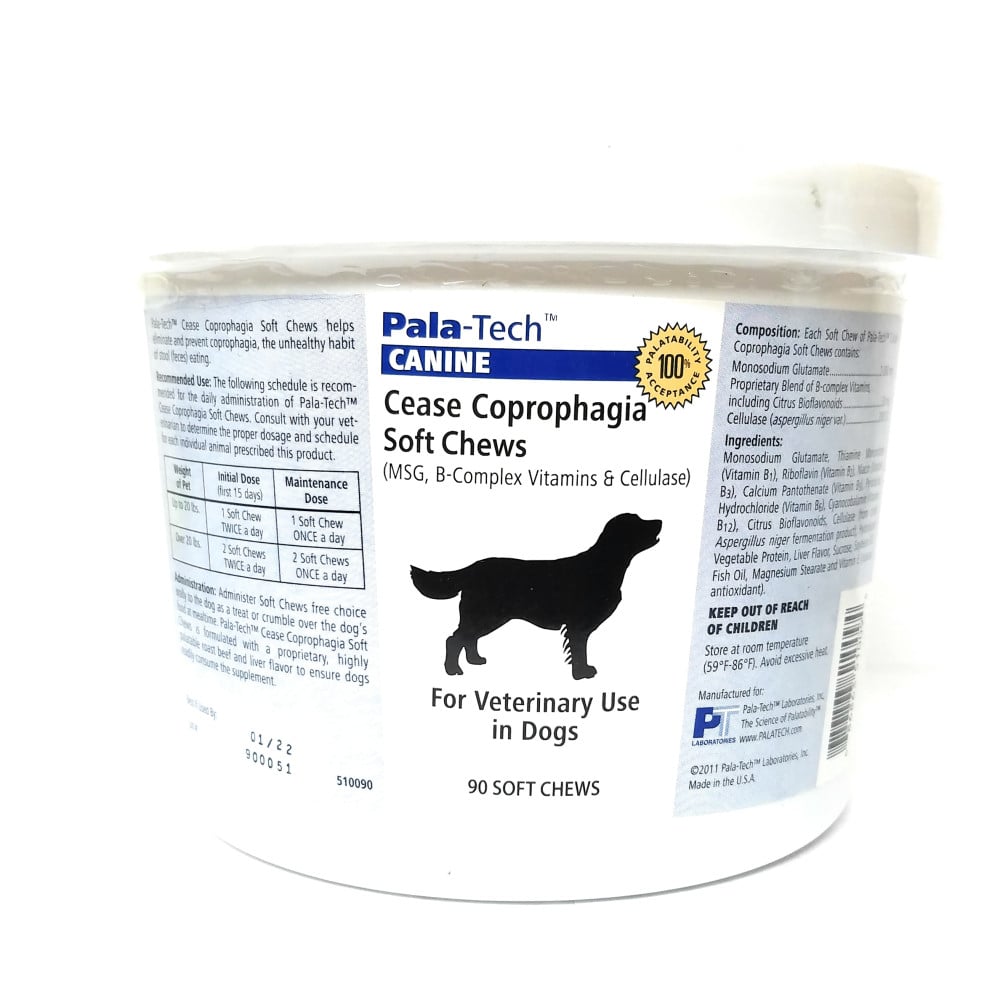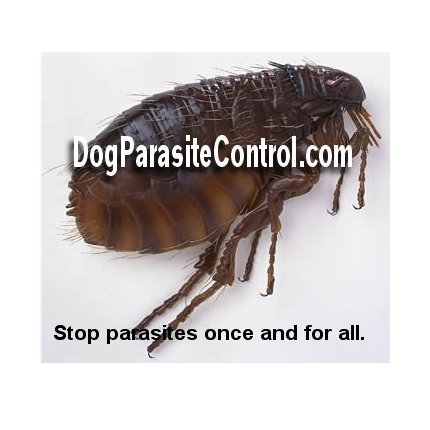Other Parasites and Pests in Dogs
Mange
My first encounter with mange was through Facebook and a sweet dog named Journey. He came into IAMRA's rescue covered with sores. It was so sad. Fortunately, IMARA took on the challenge of getting this boy back to health and he's doing better all the time. I hope to report that one day he'll have a forever home.
A small, microscopic mite actually living within it's skin is what causes mange and made Journey's life a living hell. There are two types of Mange. The first is DEMODEX CANIS which is extremely widespread but only rarely causes disease. The earliest signs of a problem will be patches of hair loss with no skin irritation on the face or legs. It often starts on puppies at puberty, bitches who are lactating, or a bitch having a false pregnancy. Mostly these lesions are mild and self-limiting and probably do not require treatment but every so often if your dog's immunity is low it can become serious. Demodex mange is not likely to pass to humans but there is a related mite called Demodex Follicularis which is common on humans. Puppy Mange is caused by the Demodex mite, the condition usually first appears around the eyes and then may spread to the rest of the body. They are characterized by loss of hair, cracking of the skin and weeping of a pink tinged fluid. It pays to be careful - areas of hair loss around the face or legs should be checked as they could represent areas of increased Demodex mite activity.
The second mange mite is SARCOPTES SCABEI - the same cause of Scabies in humans and Sarcoptic mange in dogs. Generally Sarcoptes in the dog produces obvious skin lesions and intense irritation. In the vast majority of cases these mites will not pass from dogs to humans, though it is quite contageous dog to dog. It occurs anywhere on the body but the head and chest are most commonly affected. Scabies causes a severe itching sometimes leading to self-mutilation through scratching and chewing.
Apple Cider Vinegar for Mange
Raw and unfiltered apple cider vinegar is another easy home remedy that can be applied topically to treat and control mange infection. Apple cider vinegar is mainly effective due to its antiseptic and antimicrobial properties.
- Mix together 1 cup each of apple cider vinegar and water. Pour it into a spray bottle. Spray the solution on your dog’s fur, while combing it in between. Make sure the solution saturates the skin completely. Allow the fur to air-dry. Use this remedy 2 or 3 times a week, depending on the severity of the mange.
- Alternatively, mix ½ cup each of apple cider vinegar, borax and warm water in a large bucket. Dip a clean sponge into the solution and gently rub it all over your dog. Allow the fur to air-dry. Follow this remedy 2 or 3 times a week.
- Also, add raw, unfiltered apple cider vinegar to your dog’s food once daily for a week. The dose is 1 teaspoon for dogs up to 14 pounds, 2 teaspoons for dogs between 15 and 34 pounds, and 1 tablespoon for dogs between 35 and 85 pounds.
Sulfur Soap for Mange
The alkaline nature of sulfur soaps will keep the mange under control and reduce inflammation. Plus, it will kill the parasites responsible for the condition.
- Dampen your dog’s fur with water.
- Next, rub sulfur soap around the skin until it is very foamy.
- Let it sit for 30 minutes to give the mites enough time to move up to the surface.
- Rinse with water until all the soap is removed.
- Allow your dog to shake itself, then keep him or her in the sun to air-dry.
- Bathe your dog with sulfur soap once or twice a week until there is no sign of infection.
Mites
 CHEYLETIELLA (the Dandruff Mite) This is a parasite which has steadily increased over the years. It prefers long coated dogs but even smooth coats will pick them up. They are often but not always associated with heavy dandruff in the coat. In some dogs they cause intense itching. They will pass onto humans when you are patting them or when they rub against your legs. They do not live long on humans, but some people with sensitive skin may develop irritation.
CHEYLETIELLA (the Dandruff Mite) This is a parasite which has steadily increased over the years. It prefers long coated dogs but even smooth coats will pick them up. They are often but not always associated with heavy dandruff in the coat. In some dogs they cause intense itching. They will pass onto humans when you are patting them or when they rub against your legs. They do not live long on humans, but some people with sensitive skin may develop irritation.
OTODEX CYANOTIS is the the Ear Mite. This parasite is common, and is the underlying cause of a large number of ear infections in the dog. This is important to get checked out should your dog start shaking his head or scratching ears. Another cause of ear irritation is yeast, the same thing that causes vaginal infections in women.
Dandruff, Nose Mites & Ear Mange
Dandruff - caused by the Cheyletiosis mite and affects dogs, but has been isolated from cats and people. Usually raw areas are on the head and neck.
Nose Mites - Pneumonyssus mites live in the nose and sinuses and cause chronic nasal discharge and sneezing.
Ear mange/Otodectic Mange - Otodectes or ear mites cause chronic ear infections characterized by extreme itching and reddish brown discharge. Not to be confused with a yeast-like infection caused by a ph imbalance in the ear which can be fixed by making the ear more acidic. Otomax is a good product for this, as is apple cider vinegar.
Neem
Neem, or Indian lilac, has varied dermatological benefits for both humans as well as pets. Its antiseptic nature helps treat mange and keep the infection at bay. Also works on some other parasites. It even nourishes and soothes the skin and ensures faster regrowth of fur.
- Get an over-the-counter neem shampoo and bathe your dog with it every week.
- Boil a handful of neem leaves in a pan of water for 10 minutes. Allow the water to cool, then strain it. Spray the neem-infused water onto your dog’s fur and leave it (no need to rinse it out). Repeat once daily.
- Another option is to mix equal amounts of pure neem oil and coconut oil. Apply it affected area 2 or 3 times a day.
Vegetable Oil
Any kind of vegetable oil can also help get rid of the mites and treat mange by suffocating the parasites..
The sticky nature of vegetable oil will help cut off the mites’ air supply, eventually killing them. It will also soften the wax-like deposits and scabs left behind by the mites, which in turn provides relief from the endless scratching .
- Soak a clean sponge in a bowl of vegetable oil.
- Run the oil-soaked sponge along your dog’s fur.
- Be sure to scrub the areas that are dry and patchy.
- Do this twice daily.
Honey
This powerful antioxidant makes it difficult for the mites to survive for long on the skin. It will provide relief from all that painful itching and scratching and its natural antiseptic nature helps heal the skin and prevent further infection.
- Apply some locally harvested honey directly on the affected skin.
- Allow it to sit for a few hours.
- Wipe off the excess with water to prevent your dog’s skin from being bitten by ants, which are attracted to the honey.
- Do this twice daily.
Staph & Ringworm
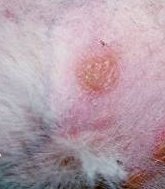 Ringworm isn't really a worm at all, it is a fungi found throughout the world and in dogs are caused by Microsporum canis, Microsporum gypseum, or Trichophyton mentagrophytes. It is a fungus caused disease affecting
the skin of dogs and cats. Sometimes it causes a circular lesion and can cause the loss of hair over the dogs entire body. In others, the lesions are moist and bright red.
Often the feet and areas between the toes are infected and the entire
foot becomes swollen. Most cases of ringworm occur in the fall and winter. The fungus is most commonly found either on or in the living quarters of infected animals. Spores from infected animals can be shed into the environment and live for over 18 months. Healthy dogs rarely carry spores on their skin or hair and the incidence of ringworm infections in dogs is quite small. Ringworm can be transmitted by direct contact with an infected animal, or with an item that has the spores on it. The spore can be on grooming tables or brushes, in a boarding facility or kennel, or just in the environment where an infected animal has visited. The most accurate way to identify a ringworm infection is by collecting scales and crust from the skin and coat and performing a culture.
Ringworm isn't really a worm at all, it is a fungi found throughout the world and in dogs are caused by Microsporum canis, Microsporum gypseum, or Trichophyton mentagrophytes. It is a fungus caused disease affecting
the skin of dogs and cats. Sometimes it causes a circular lesion and can cause the loss of hair over the dogs entire body. In others, the lesions are moist and bright red.
Often the feet and areas between the toes are infected and the entire
foot becomes swollen. Most cases of ringworm occur in the fall and winter. The fungus is most commonly found either on or in the living quarters of infected animals. Spores from infected animals can be shed into the environment and live for over 18 months. Healthy dogs rarely carry spores on their skin or hair and the incidence of ringworm infections in dogs is quite small. Ringworm can be transmitted by direct contact with an infected animal, or with an item that has the spores on it. The spore can be on grooming tables or brushes, in a boarding facility or kennel, or just in the environment where an infected animal has visited. The most accurate way to identify a ringworm infection is by collecting scales and crust from the skin and coat and performing a culture.
A Staphylococcal bacterial infection is usually referred to as a staph infection. Staph bacteria are widespread and cause mild to severe skin infections in dogs of all ages. Symptoms of staph depend on severity of the infection. A mild skin infection may appear as a crusty skin lesion, frequently on the belly area. More advanced cases of staph infection will manifest draining areas and cause severe itching. Occasionally, usually in adults, individuals are actually allergic to the staph bacteria and have severely reddened and itchy skin. Often staph infections are there because of another underlying problem such as parasitic infections, allergies, and hormonal abnormalities. The skin is usually biopsied and/or cultured and once the cause is determined, oral antibiotics are given based on test results. Often they need to be given for several months. Medicated shampoos, containing chlorhexidine can be used with the oral antibiotics.
Fleas & Ticks
These are covered more extensively on other pages.
For more about Fleas go here.
For more about Ticks go here.
Lice
There are two types of lice that typically infect dogs. LINOGNATHUS SETOSIS the sucking louse and the second isTRICHODECTES CANIS the biting louse. The biting louse is the more common, often seen in dogs in poor condition or in puppies from puppymills. It causes skin irritation and sores and the lice are easily visible crawling slowly in the dogs coat. Sucking lice share the characteristics of all ectoparasites, but differ from chewing lice by their mouthparts and width of their heads. Chewing lice have large, heavily sclerotized chewing type mandibles for gnawing on the host. They possess large muscles to move the mandibles and a large head that is needed to house the muscles. Sucking lice have small needle-like mouthparts to suck the blood of their host and have smaller mouthpart muscles and a smaller head.
The sucking louse is more difficult to see since they move less and often appear to be skin colored. Dogs can become anemic becasue of the blood sucking (this can also happen in dogs with severe flea infestation).
In both cases the lice do not live on humans although it is always possible that some might be transferred mechanically during patting and cause a temporary irritation in a human being.
Heartworms
The mosquito transmits heartworm larvae to the dog who is the host for adult heartworms. The cycle is continuous from mosquito to dog and back to mosquito again when a mosquito bites an infected dog. Once the dog is infected with larve that burrow into the skin, they find their way to the heart through the bloodstream. This takes about 6 months from the time of an infected bite. Because Heartworm is so serious, I've devoted an entire page to it here.
Coccidiosis
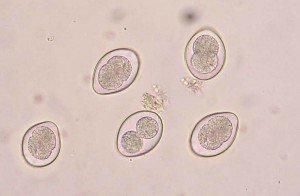 This parasite lives within the intestines of both dogs and cats causing
severe diarrhea that is often bloody. It also has a peculiar smell
you'll never forget and the feces look like they have a mucus coating.
Young puppies can get the parasite from their mother in the first weeks
of life. Older dogs can pick it up from infected feces.
It is believed that adults often carry it but show no signs and typically
do not pass the infective systs in their stool. However, if stressed,
the parasite becomes more active which increases the number of active
cysts in the stool. If these cysts are ingested (even by sniffing
around infected stools) it can produce diarrhea up to 3 weeks later.
Coccidiosis is treated with sulfadimethoxine which eliminates all clincial
signs, however, some vets feel it is never completely eliminated and
stays in the dog. That is, until the dog is stressed and the cycle
repeats.
This parasite lives within the intestines of both dogs and cats causing
severe diarrhea that is often bloody. It also has a peculiar smell
you'll never forget and the feces look like they have a mucus coating.
Young puppies can get the parasite from their mother in the first weeks
of life. Older dogs can pick it up from infected feces.
It is believed that adults often carry it but show no signs and typically
do not pass the infective systs in their stool. However, if stressed,
the parasite becomes more active which increases the number of active
cysts in the stool. If these cysts are ingested (even by sniffing
around infected stools) it can produce diarrhea up to 3 weeks later.
Coccidiosis is treated with sulfadimethoxine which eliminates all clincial
signs, however, some vets feel it is never completely eliminated and
stays in the dog. That is, until the dog is stressed and the cycle
repeats.
Tapeworms
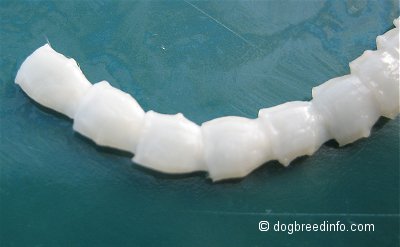 The way Malamutes like to kill and eat squirrels, bunnies and rodents it surprises me they don't get tapeworm more often. One thing I've told puppy owners is that if your dog gets one of these critters - keep an eye out for tapeworm. What it looks like is a small piece of rice near the anus. The entire worm is long and segmented, but you'll never see that - just the rice-like segments either in poop or on the dogs butt. It's easy to miss on a dog as hairy as a Malamute. Dogs get tapeworms from eating the fleas that are on the critters. There are a few different varieties ofTapeworms. Fleas carry tapeworms, so if your dog has fleas, or had fleas, there is a good chance he could have tapeworms too. Standard wormer doesn't always kill tapeworms, so a stronger wormer is needed. Usually we've had good success with Droncit. Common Tapeworm symptoms include abdominal pain, nervousness, severe itching around the anus, vomiting and weight loss. You may or may not notice any symptoms in your dog. You don't necessarily need a prescription for it if you buy online. Be sure what you found is tapeworm, however, as you don't want to treat a dog that doesn't have it. Humans can also get tapeworm from dogs with it (though not easily), so if you are petting your dog or checking out the fur near his butt, wash your hands!
The way Malamutes like to kill and eat squirrels, bunnies and rodents it surprises me they don't get tapeworm more often. One thing I've told puppy owners is that if your dog gets one of these critters - keep an eye out for tapeworm. What it looks like is a small piece of rice near the anus. The entire worm is long and segmented, but you'll never see that - just the rice-like segments either in poop or on the dogs butt. It's easy to miss on a dog as hairy as a Malamute. Dogs get tapeworms from eating the fleas that are on the critters. There are a few different varieties ofTapeworms. Fleas carry tapeworms, so if your dog has fleas, or had fleas, there is a good chance he could have tapeworms too. Standard wormer doesn't always kill tapeworms, so a stronger wormer is needed. Usually we've had good success with Droncit. Common Tapeworm symptoms include abdominal pain, nervousness, severe itching around the anus, vomiting and weight loss. You may or may not notice any symptoms in your dog. You don't necessarily need a prescription for it if you buy online. Be sure what you found is tapeworm, however, as you don't want to treat a dog that doesn't have it. Humans can also get tapeworm from dogs with it (though not easily), so if you are petting your dog or checking out the fur near his butt, wash your hands!
Hookworms
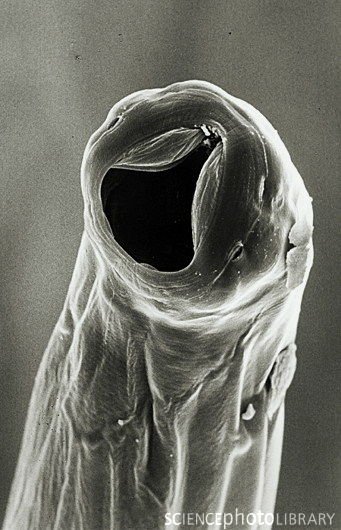 Hookworms are a very opportunistic intestinal parasite. The
adults live in the animal's intestine, securely attached by their mouth
to the inner wall of the animal's intestine. There, they constantly
suck blood from their host. In a weak or young animal, this can
be fatal. Hygene is important to eradicating this worm - if an infected dog is forced to lie on damp, dirty bedding, the larva can cause skin irritation. Dogs can get them in three ways. While still in
the uterus, larval hooks cross the pacenta and enter the embryo's body.
While nursing, larval hooks can also pass in the milk to the newborn's
body. And as youngsters or adults, free living larval hookworms
from the environment and soil can burrow through the skin into the animal.
Hookworms are easy to eliminate using wormers prescribed by a veterinarian.
Do not try and "guess" which parasite your dog has - a stool
check is necessary to prescribe the correct wormer. Wormers are
a type of poison and the wrong one can do more damage than good.
A diagnosis is made by checking a stool sample with a microscope.
Many of today's heartworm preventatives eliminate and control hookworms.
Contact your veterinarian if you suspect worms of any kind and all dogs
should have a stool sample checked routinely. The symptoms of Hookworms include: bloody stool, anemia, weight loss, dull haircoat, pale gums, diarrhea, low energy level, and a pot-bellied appearance. This parasite is usually treated with oral medication, fecal screenings, and if very severe, a blood transfusion. This worm can also be transmitted to humans. Good hygiene and cleaning up after your infected dog can prevent a human infection.
Hookworms are a very opportunistic intestinal parasite. The
adults live in the animal's intestine, securely attached by their mouth
to the inner wall of the animal's intestine. There, they constantly
suck blood from their host. In a weak or young animal, this can
be fatal. Hygene is important to eradicating this worm - if an infected dog is forced to lie on damp, dirty bedding, the larva can cause skin irritation. Dogs can get them in three ways. While still in
the uterus, larval hooks cross the pacenta and enter the embryo's body.
While nursing, larval hooks can also pass in the milk to the newborn's
body. And as youngsters or adults, free living larval hookworms
from the environment and soil can burrow through the skin into the animal.
Hookworms are easy to eliminate using wormers prescribed by a veterinarian.
Do not try and "guess" which parasite your dog has - a stool
check is necessary to prescribe the correct wormer. Wormers are
a type of poison and the wrong one can do more damage than good.
A diagnosis is made by checking a stool sample with a microscope.
Many of today's heartworm preventatives eliminate and control hookworms.
Contact your veterinarian if you suspect worms of any kind and all dogs
should have a stool sample checked routinely. The symptoms of Hookworms include: bloody stool, anemia, weight loss, dull haircoat, pale gums, diarrhea, low energy level, and a pot-bellied appearance. This parasite is usually treated with oral medication, fecal screenings, and if very severe, a blood transfusion. This worm can also be transmitted to humans. Good hygiene and cleaning up after your infected dog can prevent a human infection.
Roundworms
Round worms --also called ascarids are of whitish color. They look just like a piece of cooked Spaghetti, and live in your dogs intestine. They can reach up to 8" in length (20cm.), and feed off of your dogs food, in the intestine. Round worms shed eggs continually. You can either treat your dog for roundworms every 6 months, OR, you can have them tested and only treat if they have them. Round worms migrate throughout the blood, into the lungs, and are coughed up, and usually re-swallowed. Sometimes the larvae can travel to the liver and brain.
You may never ever see these worms, and one day one may come out in the dog's stool. They can cause bloating, diarrhea and vomiting. Your dog may stop eating, after passing through a stage of over eating, and always being hungry. In young puppies untreated roundworms before they leave the breeder (or should be). Untreated, they can cause the bowel to rupture. Often you'll see young puppies at about 3-4 weeks get a huge belly - this is usually just before they are wormed for the first time by the breeder. Puppies get roundworms from their mom. All puppies should be regularly wormed from two weeks of age (and all adult dogs wormed every year) to guard against roundworms. Puppies should continue to be dewormed every 3 weeks for the best results. 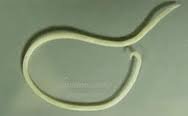
They are also transferrable to humans, and are especially dangerous for children where if untreated they can travel to the liver, eyes, lungs or brain. Symptoms include a pot-belly appearance, diarrhea, vomiting, dull coat and weight loss. You may even see this type of Worm in your dogs vomit or feces. They look like pieces of spaghetti up to 6 inches long or longer. This type of Worm is usually treated with oral medication, with follow-up fecal screenings. This is one of the types of Worms that can be transferred to humans, but good hygiene will usually eliminate this threat. If you have a puppy, make sure to pick up feces and make sure you encourage your children to wash their hands after playing with the new puppy. Routine deworming of the new puppy and good hygiene are the best for preventing any problems with you and your family.
Whipworms
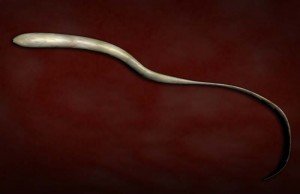 Whipworms can only be seen under a microscope. If the eggs are shed on grass by an infected animal, they can remain infectious for a very long time and are very difficult to get rid of once your dog gets them. Symptoms of a Whipworm infestation include anemia, weight loss, flatulence, diarrhea with blood or mucus in the stool and lack of energy. Whipworms can be difficult to get rid of in the environment; make sure you routinely scoop up your yard to prevent the eggs from getting established in the soil. These Worms can be difficult to treat with over-the-counter medication, but there are very effective prescription treatments such as Panacur. In order to treat whipworms, your dog will need to receive medication for 3 consecutive days and have it repeated every 3 weeks until whipworm eggs are no longer able to be detected in the feces. Only adult whipworms are killed with deworming medications and it takes approximately 3 weeks for the parasites to develop into adults.
Whipworms can only be seen under a microscope. If the eggs are shed on grass by an infected animal, they can remain infectious for a very long time and are very difficult to get rid of once your dog gets them. Symptoms of a Whipworm infestation include anemia, weight loss, flatulence, diarrhea with blood or mucus in the stool and lack of energy. Whipworms can be difficult to get rid of in the environment; make sure you routinely scoop up your yard to prevent the eggs from getting established in the soil. These Worms can be difficult to treat with over-the-counter medication, but there are very effective prescription treatments such as Panacur. In order to treat whipworms, your dog will need to receive medication for 3 consecutive days and have it repeated every 3 weeks until whipworm eggs are no longer able to be detected in the feces. Only adult whipworms are killed with deworming medications and it takes approximately 3 weeks for the parasites to develop into adults.
Chiggers
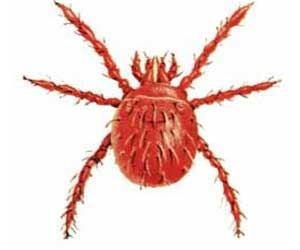
TROMBICULA AUTUMNALIS or Chiggers are found in the SE US all the way north to New York and North Dakota. About the only places they aren't found are out west and the Great Lakes for some reason. In many parts of Scotland or England it's also called the Berry Bug. The adult parasite lives in warm moist soil where they usually do not interfere with humans or animals. However in later summer they lay eggs which develop into first stage larvae which attach themselves and suck blood from a warm blooded animal. Dogs will pick them and get irritated lesions on their feet, legs and muzzle. I have never seen a chigger since I live in the Great Lakes region so I'm not sure how much of a problem they are for dogs elsewhere.
Deerflies and Horseflies
This is really more of a problem for outdoor dogs, but they can still be annoying to housepets at times. Some flies , such as horse flies and deer flies,, can take a bite out of your dog's ears, belly or backside which can hurt, bleed and become infected. They are particularly active during the day in hot weather, so if they tend to bother your dog, make sure to keep her inside during those times. If your dog has suffered some bites and irritation to his ears, use saline or chlorhexidine to clean them and remove oozing crusts. A good antiseptic cream and fly repellent will help keep flies from bothering the areas as well. Areas that tend to have lots of flies should have fly bait or traps to capture adult flies before they can lay eggs which will eventually turn to maggots - a serious veterinary problem that can cause severe infection. Fly Traps work by trapping flies in a container where they die. The traps can then be discarded and replaced if needed. Both methods have been used effectively in kennels and livestock facilities, even under decks to keep flies away from humans and indoor pets. You can also spray the area with premise sprays, which kill flies and other insects in the broad area around where pets live.Dogs can inflict damage on themselves by just trying to keep flies off their ears. Traumatized ears can be very painful, but with the right treatment and fly repellent, you can soothe the pain and heal the trauma.
Home Remedy to Keep Flies Off Dogs
- Try a fly spray made with an ounce of citronella oil and cider vinegar. Add a cup of water and basil and a bay leaf.
- Use a mixture of baby oil and permoxin in equal parts to create an ointment.
- Apply a scented skin moisturizer (like Avon's Skin so Soft) mixed with water to your dog's skin before it goes outdoors.
A weird home remedy to keep flies out of kennels, stables and homes (the Amish say it works!)
- Fill a ziplock with water and hang it near the door where the flies get in
- Optionallly put a few pennies in the bag.
There is a theory that flies don't like the water bags because of their compound eyes...The reflections make it seem like they are outnumbered by preditors...but who knows...it works.
Keeping your Malamute Parasite Free
Basically the key to getting rid of and keeping away parasites is a correct diagnosis, proper medication and clean conditions. Also, if your dogs do not have worms, they are unlikely to get them from within your fenced yard or eating other family dogs poop. They are most likely to get them from outside of your yard, or from sniffing/eating an infected dog's poop. Some parasites are gotten by eating fleas or from 'hunting' wild critters in your back yard. Not all wormers are good for all worms. Whipworms are resistant to many drugs and tapeworms require Droncit or something equivalent. Some parasites require multiple dewormings and just because you can't see them, doesn't mean your dog doesn't have worms. Make sure your dog doesn't have fleas or use a good flea preventative such as Frontline and always wash your hands after playing with young puppies and picking up feces. Get some food grade D-earth and sprinkle it around your yard - it will help with ticks. Get your dog a yearly fecal - better to be safe than sorry! I'm feeling itchy just writing this...

